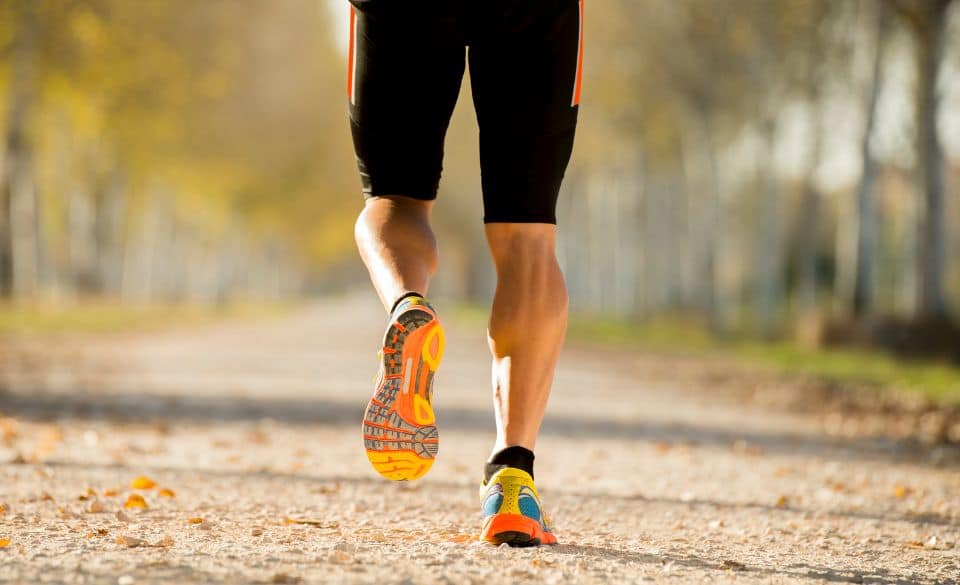
Does Running Give You Big Calves? Debunking the Myth
Page Contents
When it comes to running, one of the areas that often gets a lot of attention is the calf muscles. Many people wonder whether regular running can lead to bigger, more muscular calves. In this blog post, we will explore the impact of running on calf muscle development and whether it can result in bigger calves.
The Role of Running in Calf Muscle Development
When it comes to calf muscle development, running can play a significant role. The calf muscles, which include the gastrocnemius and soleus muscles, are heavily engaged during running. These muscles are responsible for flexing the foot, pushing off the ground, and absorbing impact with each stride.
Running involves repetitive contraction and relaxation of the calf muscles, which leads to muscle engagement and activation. This constant work stimulates the growth and development of the calf muscles over time. However, it’s important to note that the extent of muscle growth can vary based on individual factors and training variables.
Research has shown that running can indeed contribute to calf muscle development. A study published in the Journal of Applied Physiology examined long-distance runners over a 12-week training period. The researchers found significant increases in muscle fiber size in the calf muscles of the runners, indicating muscle growth from running.
Another study published in the European Journal of Applied Physiology focused on the effects of uphill and downhill running on calf muscle strength and size. The results demonstrated that both uphill and downhill running led to increases in calf muscle strength and size. This suggests that the varied terrain and intensity of running can have a positive impact on calf muscle development.
While these studies provide valuable insights, it’s important to consider individual responses may vary. Factors such as genetics, training intensity, and overall body composition can influence the degree of calf muscle growth from running. Some individuals may experience more noticeable increases in muscle size, while others may primarily notice improved muscle tone and strength.
Studies on Calf Muscle Development and Running
Several studies have investigated the relationship between running and calf muscle development. One study published in the Journal of Applied Physiology examined the muscle changes in long-distance runners over a 12-week training period. The researchers found that the calf muscles of the runners showed significant increases in muscle fiber size, suggesting that running can contribute to calf muscle growth.
Another study published in the European Journal of Applied Physiology explored the effects of uphill and downhill running on calf muscle strength and size. The researchers found that both uphill and downhill running led to increases in calf muscle strength and size. This indicates that the varied terrain and intensity of running can have a positive impact on calf muscle development.
While these studies provide valuable insights, it’s important to note that individual responses may vary. Factors such as genetics, training intensity, and overall body composition can influence the degree of calf muscle growth from running. Some individuals may experience more significant increases in muscle size, while others may primarily notice improved muscle tone and strength.
Other Factors to Consider
While running can contribute to calf muscle development, it’s essential to consider other factors that may affect your results. Body composition, including your body fat percentage and overall muscle mass, can influence how your calves appear. If you have a higher body fat percentage, your calf muscles may not be as visible, even if they have developed. On the other hand, individuals with lower body fat percentages may have more defined and prominent calf muscles.
Additionally, focusing solely on running may not provide a comprehensive approach to calf muscle development. Incorporating strength training exercises that specifically target the calves, such as calf raises, can help enhance muscle growth and size. By combining running with targeted strength exercises, you can create a well-rounded fitness routine that supports both cardiovascular health and calf muscle development.
What Fitness Activity Gives You Bigger Calves
If you’re specifically looking to target and develop your calf muscles for bigger calves, there are several fitness activities that can help you achieve your goal. While individual results may vary, incorporating the following exercises into your routine can promote calf muscle growth and enhance the size of your calves:
Calf Raises: Calf raises are a classic exercise that directly targets the calf muscles. Stand on the edge of a step or raised platform with your heels hanging off the edge. Raise your heels as high as possible, then lower them back down. To increase the challenge, you can perform calf raises with weights or use a calf raise machine at the gym.
Skipping Rope: Jumping rope is a great cardiovascular exercise that also engages the calf muscles. The repetitive jumping motion places constant tension on the calves, promoting muscle growth. Try incorporating different skipping techniques and gradually increasing the intensity and duration of your skipping sessions.
Stair Climbing: Climbing stairs is a fantastic exercise to work the calves. Whether you’re climbing actual stairs or using a stair climber machine at the gym, this activity engages the calf muscles as you push off with each step. To challenge your calves even more, try taking the stairs two at a time or increase the speed of your stair climbing.
Hill Sprints: Running uphill or performing hill sprints is an excellent way to target and develop the calf muscles. The incline forces your calves to work harder, leading to muscle activation and potential growth. Incorporate hill sprints into your running routine or find a hilly area to perform uphill runs.
Plyometric Exercises: Plyometric exercises, also known as jump training, can help develop calf muscle size and strength. Exercises like box jumps, tuck jumps, and squat jumps require powerful calf contractions, contributing to muscle growth. Start with lower-impact variations and gradually progress to more advanced plyometric exercises.
Remember, consistency and progressive overload are crucial for calf muscle development. Gradually increase the intensity, resistance, or duration of your exercises to challenge your calves and stimulate muscle growth. Additionally, proper nutrition and sufficient protein intake are essential for muscle repair and growth.
It’s important to note that genetic factors may play a role in calf muscle size and shape. Some individuals naturally have more prominent calf muscles, while others may find it more challenging to develop bigger calves. Embrace your unique body and focus on maximizing your calf muscle potential through targeted exercises and a well-rounded fitness routine.
Final Words
While running can contribute to calf muscle development, whether it leads to big calves depends on various factors. Regular running engages and activates the calf muscles, leading to improved muscle tone and strength. Some individuals may experience noticeable increases in calf muscle size, while others may primarily notice improved muscle definition and shape.
It’s important to remember that individual responses may vary, and genetics, training intensity, and body composition all play significant roles. Incorporating strength training exercises that specifically target the calves can further enhance muscle growth and size. Additionally, maintaining a balanced diet and proper nutrition is crucial for supporting muscle growth and overall health.
Ultimately, whether you achieve big calves from running or any other form of exercise is a result of a combination of factors. Focus on your individual progress, set realistic goals, and enjoy the process of improving your calf muscle strength and definition through regular running and targeted exercise.




